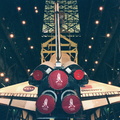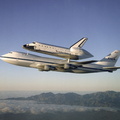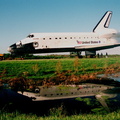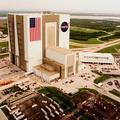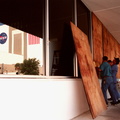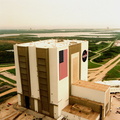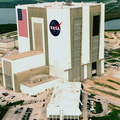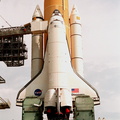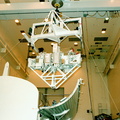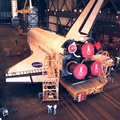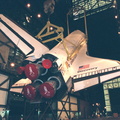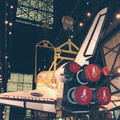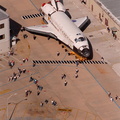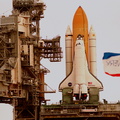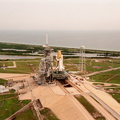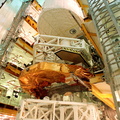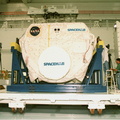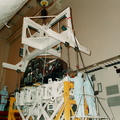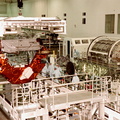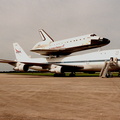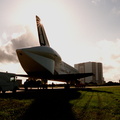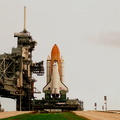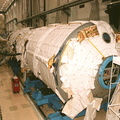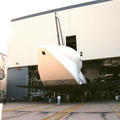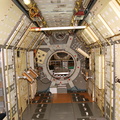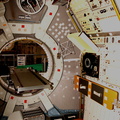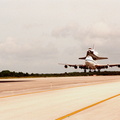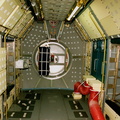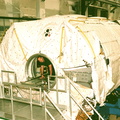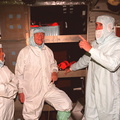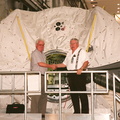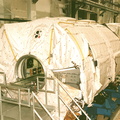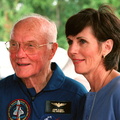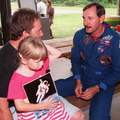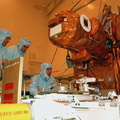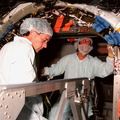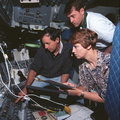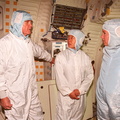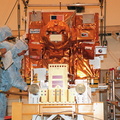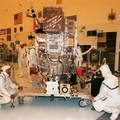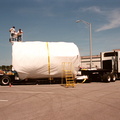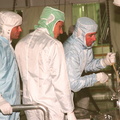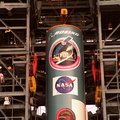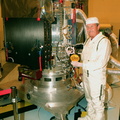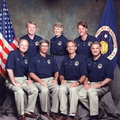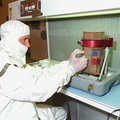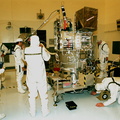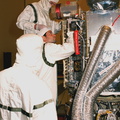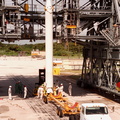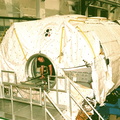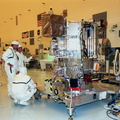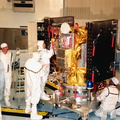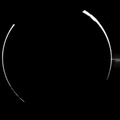
WIKIARCHIVES.SPACE
The Human Spaceflight Archive

Information
- Taken in
- Kennedy Space Center
- Aŭtoro
- NASA
- Priskribo
- Spacelab Module MD001 (foreground) and its sister module (behind it) are prepared for shipment to the National Air and Space Museum in Washington, DC. Spacelab was designed by the European Space Agency (ESA) for the Space Shuttle program. It first flew on STS-9 in November 1983 and its final flight was the STS-90 Neurolab mission in April 1998. The sister module will travel home and be placed on display in Europe. The Spacelab concept of modular experiment racks in a pressurized shirt-sleeve environment made it highly user-friendly and accessible. Numerous experiments conceived by hundreds of scientists on the ground were conducted by flight crews in orbit. Spacelab modules served as on-orbit homes for everything from squirrel monkeys to plant seeds. They supported astronomical as well as Earth observations, for servicing the Hubble Space Telescope and for research preparatory to the International Space Station. One of the greatest benefits afforded by the Spacelab missions was the opportunity to fly a mission more than once, with the second or third flight building on the experiences and data gathered from its predecessors
- Kreita je la
- Merkredo 23 Septembro 1998
- Fotaroj
- US SPACE PROGRAM / SPACE SHUTTLE / MISSIONS / STS-90 / Post Flight
- Source link
- https://images.nasa.gov/details-KSC-98pc1146
- Vizitoj
- 50
- Poento
- neniu taksado
- Taksu tiun foton
- License
- Public Domain
- Modified by WikiArchives
- No (original)
- Elŝutadoj
- 1
Datumoj EXIF
- DateTimeOriginal
- 1998:09:23 00:00:00
Potencigita per Piwigo
